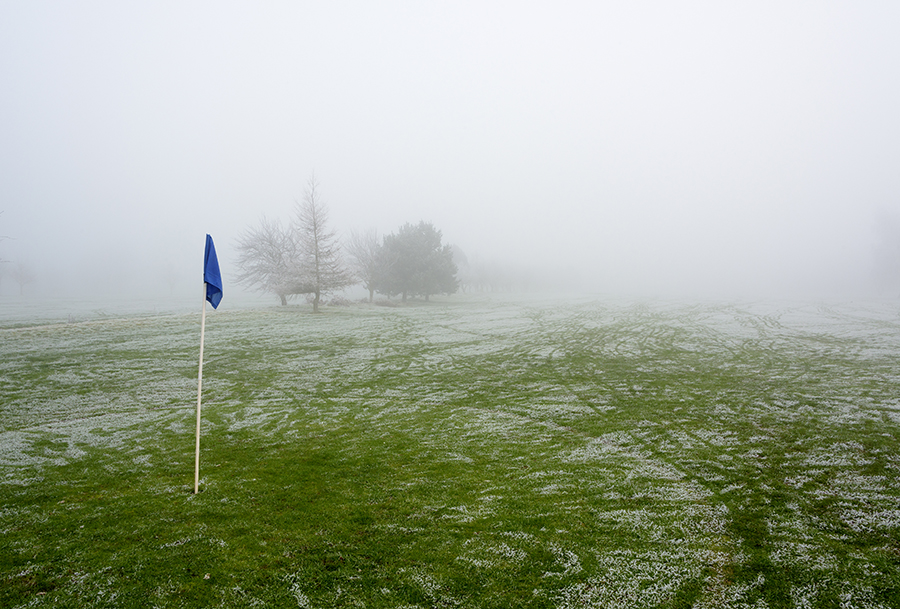
Winter nutrients help ensure a strong Spring transition.
Winter Is Here - Prepare Now For Spring!
Posted in General by Curtis Williams
For those who do not have temperatures cool enough to completely reach dormancy and hold it until spring green-up, it is critical to continue winter fertility programs, though slightly modified from those during the growing season. Focus goes to maintenance of carbohydrate reserves, color holding where possible, wear resistance and continued metabolic activity where possible.
As temperatures cool, the plant goes into metabolic shut down, storage mode, to protect itself from cold weather damage. This is completely natural, but unfortunately in the southern transition zone to the far southern growing regions, grasses seldom go completely dormant and will continue to metabolize with minimal amounts of growth and activity. There is no need to force growth but it is important to maintain some activity and carbohydrate reserve, “The Carbohydrate Gas Tank”.
When temperatures moderate following cold weather, the plant often times greens back up and grows slightly, exhibiting basic metabolic activity.
This during the winter, plants burn reserved carbohydrates, as that is the most effective means the plant has to access the carbohydrates required in the process of making amino acids and proteins, the precursor to growth and plant material as we see it.
As the reserve is taxed, it is critical to maintain the “Carbohydrate Gas Tank” so that there is no slow down when opportunities arise during moderate periods.
It is also critical to maintain the plant in our area due to high traffic during low growth periods, especially in the Deep South on warmer winter days. Use of products containing higher percentages of Amino Acids, Nitrate based N, soluble K, soluble Mg, soluble Micros in general will be very beneficial during these periods
The first consideration will be to spray only when the plant will accept the nutrients and use of nutrients that will be taken up by the plant. As biological activity will be slow to minimal at best, the use of nutrients that are available and carbon sources that are very short-chained will be far superior to slow release nutrition, low solubility nutrition and longer chain carbon sources.
Spraying on days at times when air temperatures are above 50 degrees will be far better than during lower temperature periods. This effect can be seen easily on golf courses throughout the region where the first few greens seem to struggle more than the last few.
This is easily understood when you consider the temperature at initial spraying is likely considerably cooler than when the final surfaces were sprayed. There is also the additional effect in winter of golfers playing only the front nine as opposed to all 18 holes due to time constraints. The other factor is often related to frost, with play happening too early on frosty surfaces or spraying being done too early in the day.
Frequency should be based on effective periods of spraying and NO spraying occurs when the plant will not accept the nutrients.
Fertility programs may be spread out and effective when used following good common sense guidelines. Hitting a particular schedule is not as important as spraying when it will be effective and spraying what is effective.
The practice of self-induced dormancy is a practice that should not be considered appropriate in any form. If the plant does not go dormant due to temperature and stays that way, it is extremely important to stay on a program to support the plant during the winter.
For Nitrogen, which should be used very sparingly, only Nitrate forms (K Nitrate, Ca Nitrate, Mg Nitrate) will be useful and beneficial at very low rates. Nitrate requires no microbial activity to be available. K in this form is highly available and very beneficial during cool periods. Ca being the least important form during winter but far better than Urea or Ammonium form of Nitrogen. Mg would be exceptional in winter months as it supports Chlorophyll production, color and metabolism. A combination of K Nitrate and Mg Nitrate would be excellent options in cool weather.
As Amino Acids contain the top 4 plant nutrients being Carbon, Oxygen, Hydrogen and Nitrogen, they will be excellent in winter spray programs. Yes, remember, plants are Carbon, Oxygen, Hydrogen as #1, 2, 3 elemental components, Nitrogen is #4. The plant makes Amino Acids which are by definition C/H/O/N molecules with a side chain option.
Ameriturf suggests use of products such as Rx Supreme, Rx K+, Rx Mg, Component Core, Component M, Component K, Krystal Klear, Nutrol and Pennamin as options for general nutrition with Rx CaSi used as the best wear tolerance option in the industry.
All these products are designed to work exceptionally well without microbial activity and low plant metabolic activity, which is critical in cooler winter months. These are highly active products that are easily taken up and used by the plant as well as supportive of cool weather hardening and carbohydrate management.
I can not stress the importance of these inputs in winter programs to maintain carbohydrate reserves and plant metabolism in non-dormant regions. The benefits during the winter months and especially in spring transition will far outweigh the costs of these programs.
Contact your AmeriTurf representative about specific programs that address your plant needs through the winter months.